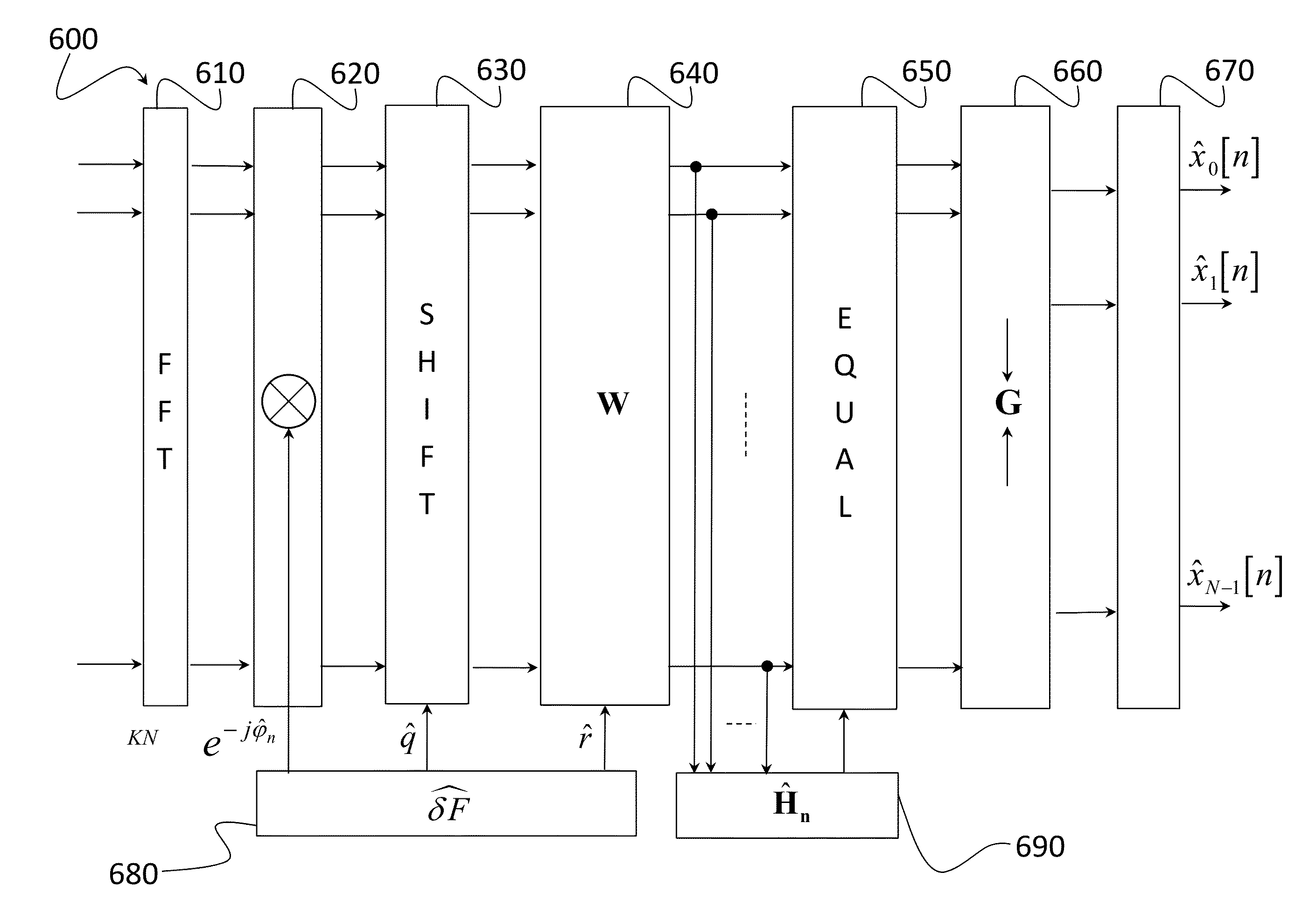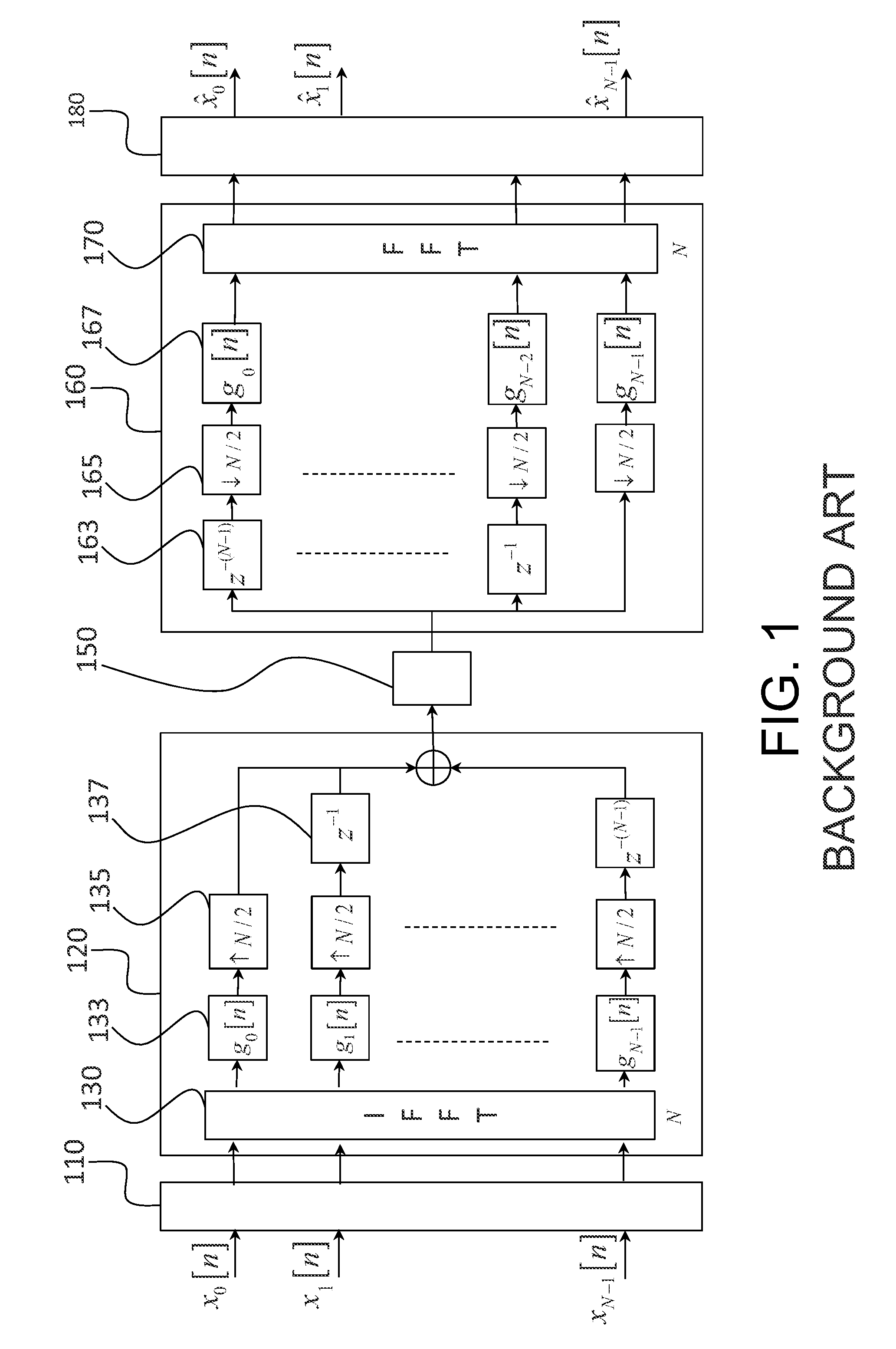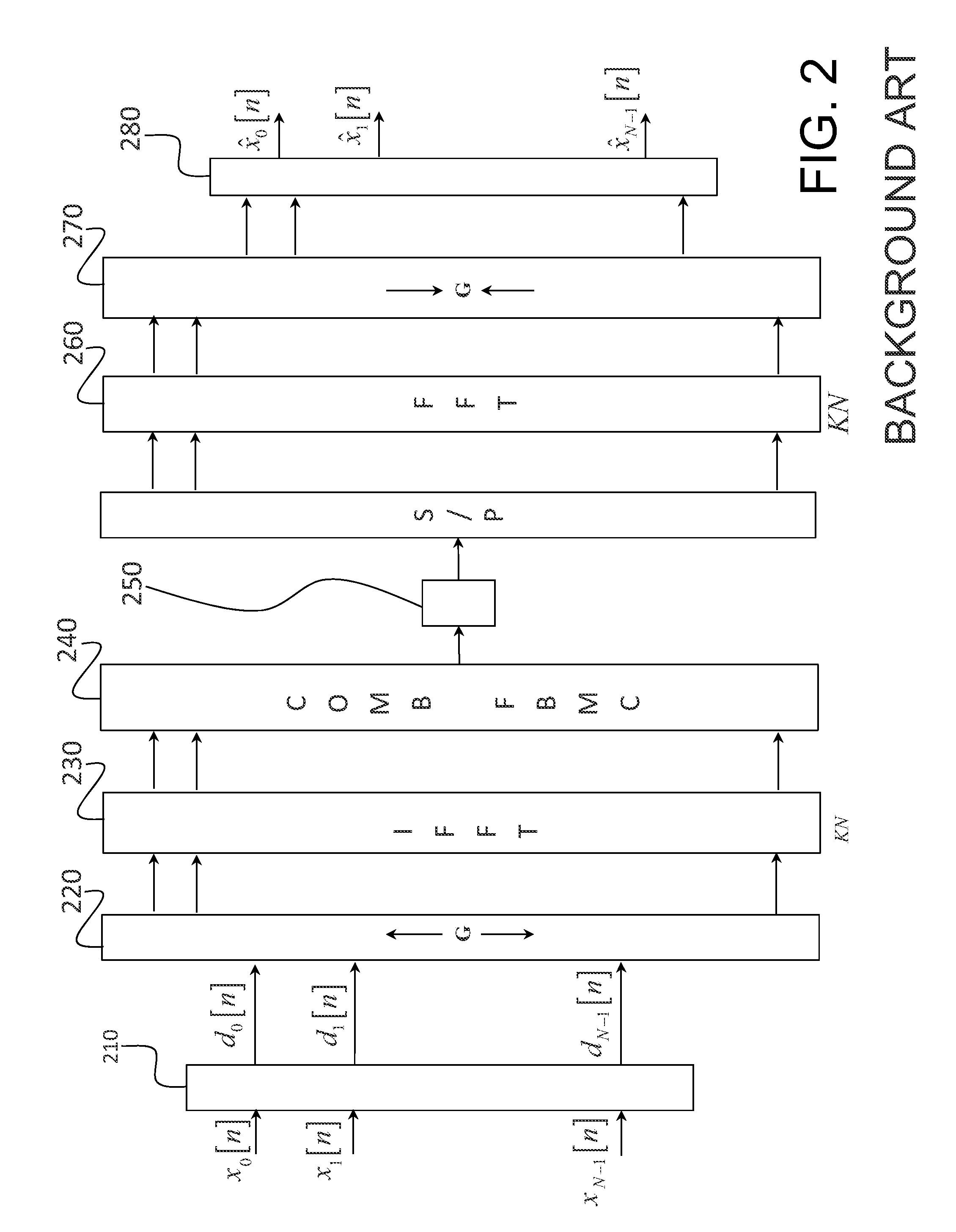FBMC receiver with carrier frequency offset compensation
a carrier frequency offset and receiver technology, applied in the field of telecommunication systems, can solve the problems of loss of spectral efficiency, inability to effect and inability to achieve the effect of offset compensation on the upstream connection of the fbmc receiver
- Summary
- Abstract
- Description
- Claims
- Application Information
AI Technical Summary
Problems solved by technology
Method used
Image
Examples
Embodiment Construction
[0081]We shall consider hereinafter an FBMC receiver implemented in the frequency domain, as described in relation to FIG. 2. The idea at the basis of the invention is to effect in an original manner the correction of offset in the frequency domain, at the output of the FFT.
[0082]It will be assumed first of all that the receiver receives FBMC symbols only from one user (the case of the downstream connection for example or of a single user on the upstream connection).
[0083]The signal received by the receiver, after base-band demodulation, is sampled at the frequency Nf and the samples obtained are subjected to a sliding FFT, of size KN, where N is the number of sub-channels (or in an equivalent manner the number of synthesis / analysis filters) and K is the overlap factor of the FBMC transmitter.
[0084]dn means the vector of the data, or more precisely the vector of the OQAM symbols di[n]i=0, . . . , N−1, transmitted by the transmitter, that is to say dn=(dO[n], . . . , dN−1[n])T.
[0085]...
PUM
 Login to View More
Login to View More Abstract
Description
Claims
Application Information
 Login to View More
Login to View More - R&D
- Intellectual Property
- Life Sciences
- Materials
- Tech Scout
- Unparalleled Data Quality
- Higher Quality Content
- 60% Fewer Hallucinations
Browse by: Latest US Patents, China's latest patents, Technical Efficacy Thesaurus, Application Domain, Technology Topic, Popular Technical Reports.
© 2025 PatSnap. All rights reserved.Legal|Privacy policy|Modern Slavery Act Transparency Statement|Sitemap|About US| Contact US: help@patsnap.com



